This is a transcription of a feature article that appeared in the black-owned Detroit Tribune, October 29, 1955. The archive of the Tribune can be found on the Library of Congress Web site “Chronicling America.” Follow this link to see the actual article The Detroit Tribune. I have added photographs from my family archive and corrected typos. Please do not reuse without permission and linking to this blog. Thank you.
****
(Editor’s Note: Due to the hugeness of this area, the Tribune is forced to publish this series in two parts. The second part will appear at a later date.)
The Tribune’s “Neighborhood of the Week” is a feature series designed to afford people who generally are not in the news an opportunity for expression and publicity.
This is the sixth area to be covered by the TRIB in Metropolitan Detroit. And by some standards is considered as the “most fabulous.”
Called Gold Coast
Nicknamed as the “Gold Coast,” because of its richly furnished and lavish homes, this new neighborhood was a direct result of the outlawing of restrictive covenants. It literally sprang-up during and after World War II when the city was jammed with defense workers, and was practically bursting at the seams. Old homes are being torn down to make room for the new expressway system and new housing projects. And old Detroiters had to have some place to go.
So, they invaded this area north of West Grand Boulevard and west of Woodward.
Each time the Negro population has to expand, in this and most U.S. cities, there is always the question of where are they going. The problem of dislocation and securing of housing was also true in this case, excepting that integration was prevalent as another problem.
Nevertheless, those who were dislocated, evicted or homeless moved into the “Gold Cost” area from all points over the city. This ingress was so fast that this section is hailed as the fastest developed in modern Detroit history.
What were the consequences of this swift development? As usual, your roving Tribune reporter will take you along with him and find out, visiting the churches, the business places and the “average resident” and let them tell you of their fabulous neighborhood.
Central Congregational
Let’s stop the young and dynamic minister of the Central Congregational Church, the Rev. Albert B. Cleage, Jr.
Since their (the congregation) activities for the day were a fine reflection on the residents of the area, we think their project “Work Day For Christ” should be publicized.
The Junior and Senior Fellowships of the church with the slogan, “Being Christian Means Helping Others.” And they carried out this slogan to the highest as each member contributed a full-day of labor to their world-wide missions on Saturday.
Here is how they were scheduled:
After breakfast at the parsonage at 8 a.m., they worshiped for about 45 minutes before starting to work at odd jobs, such as car washing, holding a bake sale, raking leaves, washing windows and others.
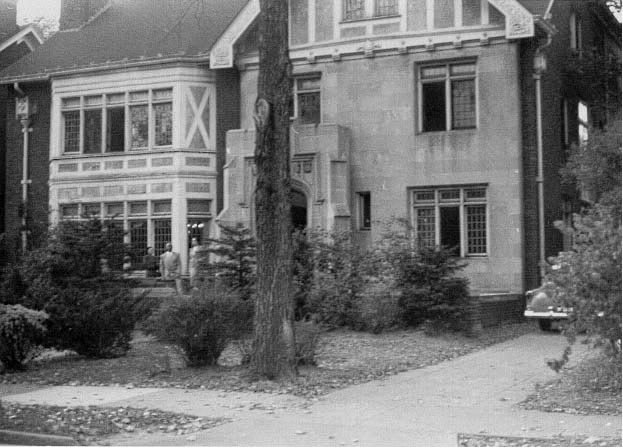
They reported back to the parsonage at 12:30 for a box lunch, then at 1:30 p.m. completed or started on other odd jobs until 5 o’clock when they went for supper, returning at 7 p.m. for a two hour workers party in the parsonage.
Full-Day of Work
This was really a full day for the youths, but they seemed to enjoy it with enthusiasm and eagerness to complete more than two or three jobs during the day.
The Youth Fellowship is geared “to make real demands upon their time, abilities and talents … we accept only those young people who are willing to participate in the total program.
“Young people who are interested only in recreational and social activities can find other organizations and clubs designed to serve their needs.”
Thus, partially reads a somewhat of a preamble for the youth to follow in pushing the church program which has three basic areas of Christian Living, meaning Faith, Action and Fellowship.
More than two hundred young people enrolled in the church’s Junior and Senior Fellowships contributed a day’s labor to raise funds for Congregational Christian World Missions.
A breakfast for the young people was served by a committee of mothers in the recreation room of the spacious church parsonage at 2254 Chicago Blvd.
Mrs. Eleanor Hughes served as chairman and was assisted by Mrs. Julian P. Rogers, Jr., Mrs. Marie Scruggs and Mrs. Barbara Martin.
The breakfast closed with a service of worship and consecration conducted by the Faith Commissions of the two organizations. Participating were Miss Phyllis Hughes, Miss Andree Keneau, James Gilliam, Jr., and Miss Sharon Allen.
The Car-Wash was held at the home of Miss Beverly Baker, 11340 LaSalle Blvd., and parents, church members and residents of the community kept the cars coming from 9 a.m. until 5:30 p.m.
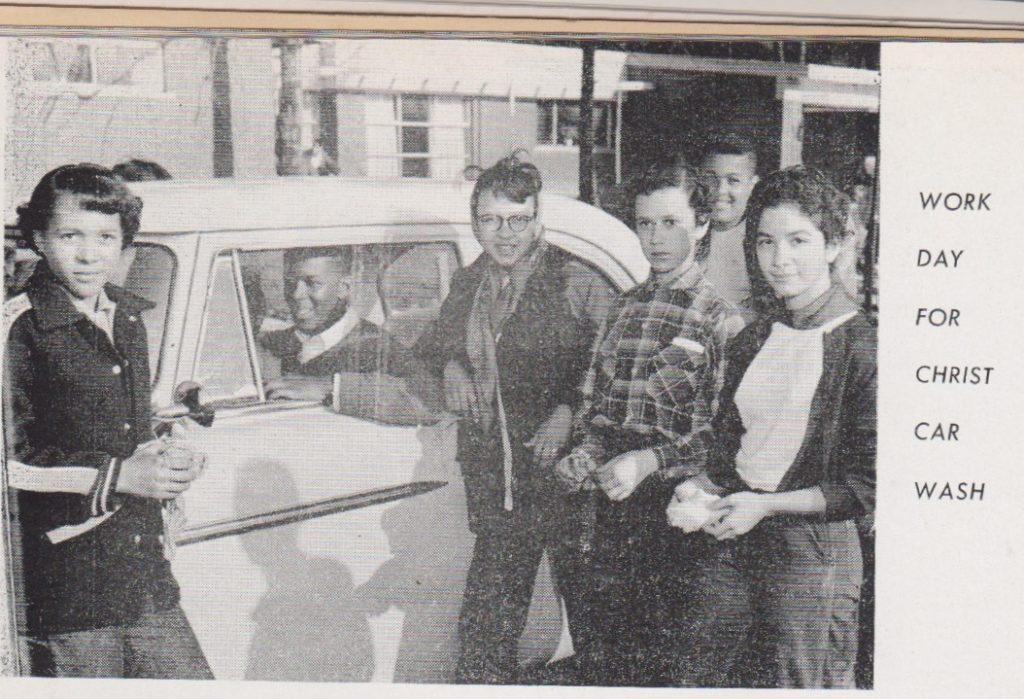
While the car-wash workers, under direction of Curtis Faire, were keeping their production line moving, the Bake-sale and odd- committees were conducting door to door canvasses.
The seemingly inexhaustible supply of baked goods was sold out by two o’clock.
The odd-job brigade raked leaves, took down screens and put up storm windows, scrubbed floors, cleaned basements, washed dishes, and took care of children for busy mothers, and the jobs continued to pour in until the 5:30 quitting time.
On Sunday, members and their parents were invited to a special service of dedication at Central Congregational church, with the pastor, the Rev. Albert B. Cleage, Jr., preaching on “Our Christian World Mission. Afterwards officers of the Fellowship group dedicated the money earned to Christian service.
The Youth Fellowship Choir under direction of Oscar R. Hand and accompanied by Larry Manderville, participated in the service. Miss Gail Payne rendered a solo.
2 1/2 Years Old
Central Church was organized just two and a half years ago by the Rev. Albert B. Cleage, Jr., with services of Worship held in the auditorium of the Crosman School, Hamilton at Clairmont. The church is now engaged in a city-wide Building-Fund drive to make possible the purchase of a church building.
The lack of a building, however, has done little to hamper the development of the church’s outstanding seven-day week program.
The church sponsors a Cub Scout Troop, a Boy Scout Troops, four Girl Scout Troops, two Youth Fellowship organizations, a children’s choir, a youth Choir, and a Boy’s Athletic Club with baseball and basketball teams in the inter-church Recreational League, in addition to a full program of adult activities.
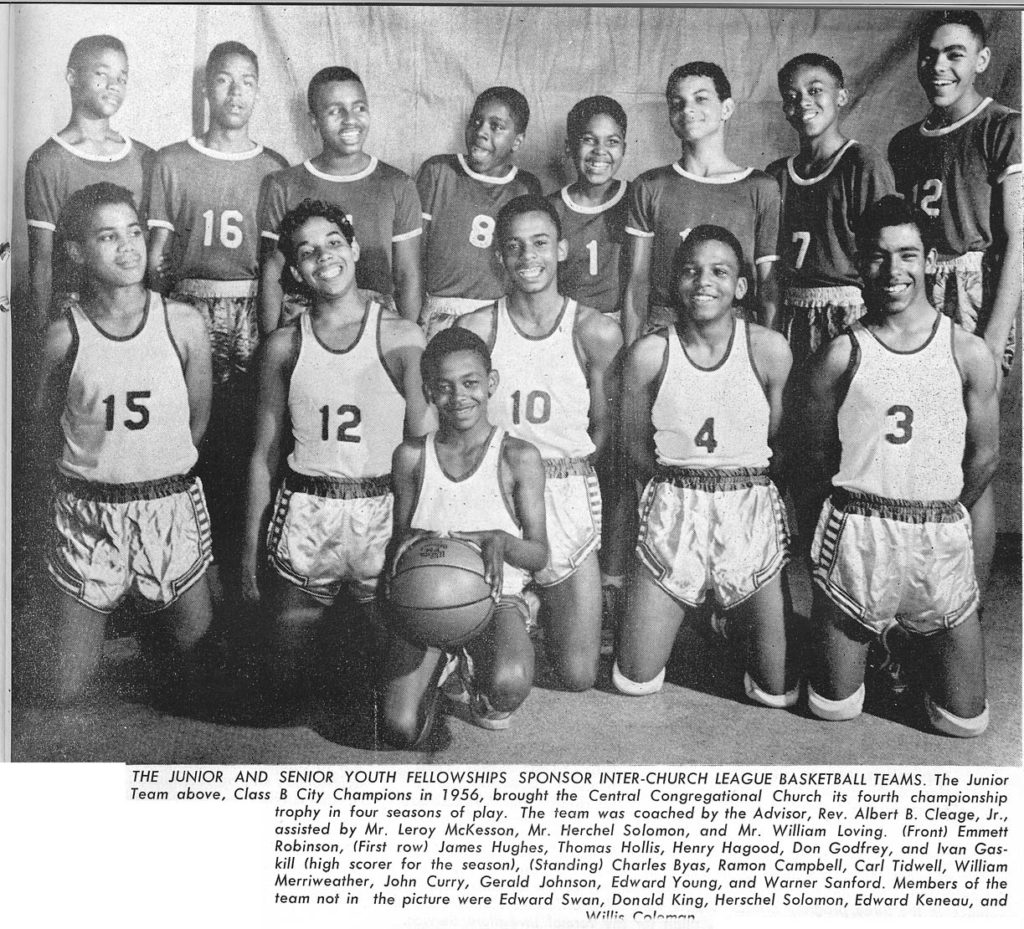
The Men’s Club’s weekly Bowling League and monthly Forum meetings, and the Women’s Cultural Committee Forums, Square Dances, and Bridge Parties are community-wide in scope.
Wayne Graduate
Rev. Mr. Cleage, Jr., is a graduate of Wayne University and the Oberlin Graduate School of Theology. He had completed two years towards his doctorate in religious education at the University of Southern California. Before returning to Detroit, Mr. Cleage held pastorates in Lexington, Ky., the Fellowship in San Francisco, Cal., and the historic old St. John’s Congregational Church of Springfield, Mass.
Before entering the seminary he served as Director of Youth Work at Plymouth Congregational Church at Detroit while employed as a Social Worker. The pastor is active in the Congregational Association of Detroit, of which his church is the youngest of twenty-seven.
Central and Plymouth Congregational churches are the only two designated specifically as Negro in Michigan.
Mr. Cleage serves as Chairman of the Social Action Committee of the Association, and member of its Board of Trustees.
He is on the Camp Management Committee of the Association’s Camp Talahi located near Brighton, Michigan, serving as counselor at both Camp Talahi and the Congregational State Conference Camp, Pilgrim Haven.
Adult Advisor
Mr. Cleage is also one of three adult advisors for the Detroit Association’s Youth Fellowship organizations. He is a regular guest speaker at other Congregational churches. During the past month he has spoken in Eaton Rapids, Dearborn, and Birmingham. He has conducted youth seminars at two churches in Detroit.
At the Fall Religious Education Workshop sponsored by the Detroit Association at the Gross Pointe Congregational Church, Mr. Cleage conducted the Seminar on Youth Work.
Thus, for the moment, we’ll end our visit in the “Gold Coast” area, hoping you will again visit it with us upon our second trip.
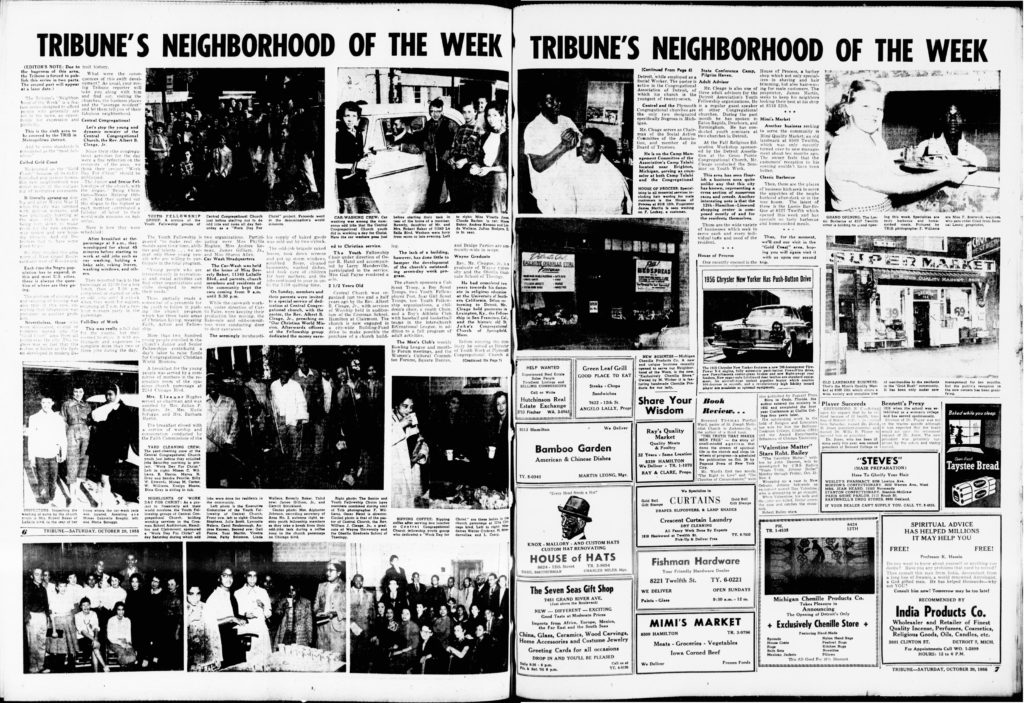
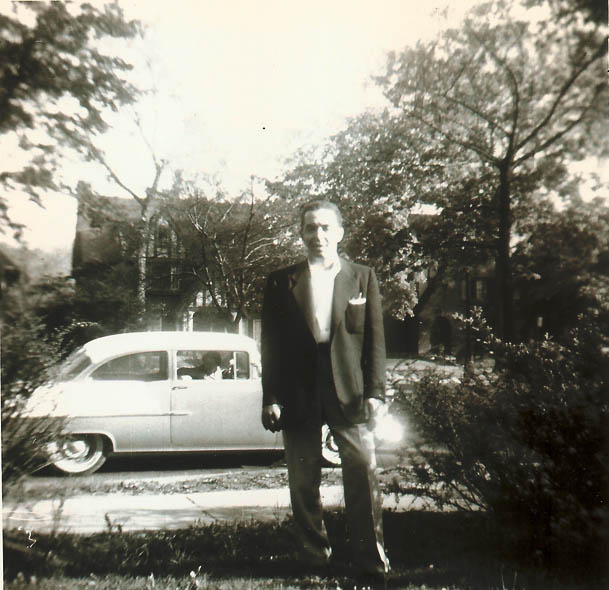
Dear Kris,
What you’re doing with your blog could and SHOULD be considered a model to others on how genealogy and family history can be used to explore matters of BROAD history and culture.
Frankly, I have little or no use for most genealogical and family history blogs for this very reason — because most are essentially NARROW. “My family did this, my family did that.” “So WHAT!” I usually ask myself. EVERY family “did this” or “did that,” but recording “this” and “that” in the particular tells us NOTHING about the general of which we are ALL a part.
As you’re aware, I know and love your family (and feel particularly close to you, your Dad and Cardinal Nandi), but the way that you tell its story helps me to understand MY family and, more importantly, OUR families — that is, those families that have been defined by our specific historical and cultural experience.
This makes your “stories” more than simply interesting (although they’re always that). They’re also VALUABLE — to more people than you probably imagine, particularly if, as I pray, one or more of your children or grandchildren one day takes it up and extends it far into the future.
You might think that I’m flattering myself whenever I call myself “Your Li’l Bro’.” That’s partly true cuz who WOULDN’T want to be a member of such an amazing family. However, you should accept this as a statement of RESPECT cuz I’m doing my best to follow YOUR lead. Of course, I’ll never achieve your high standard (few of us will), but at least you’ve given me one to aspire to.
I have the honor to remain, more than ever
Your Li’l Bro’,
Paul Lee Cleage
Beautiful parsonage! Is it still standing, do you know?
It’s still standing, but it’s had a fire and the roof is lower and various people have moved in and moved out and vandals have stripped it. It’s a mess. No one was living there last time I checked. There was a big stained glass window on the landing when we lived there, but it’s gone. Here’s a link to something I wrote about living there. http://findingeliza.com/archives/15306
That’s such an interesting glimpse into the past.
Cait @ Of Needles and Noodles
I really appreciate you visiting and commenting on my posts Cait!
So happy to read this…a very enjoyable glimpse into a neighborhood, a church “family” and the activities that were happening then.
I found an archive of the Detroit Tribune and thereby found quite a few articles I never saw before about various members of the family. I have several more planned.